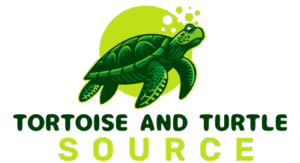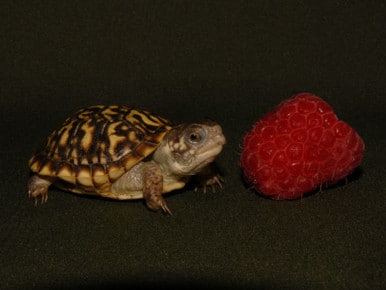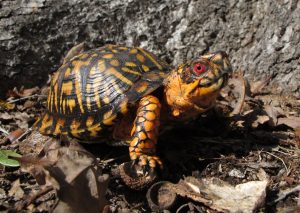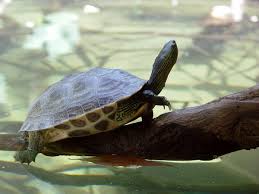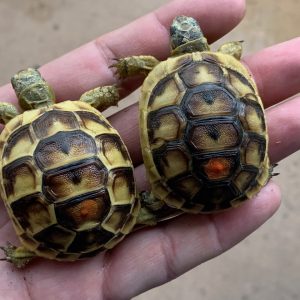Introduction
Desert tortoises (Gopherus agassizii) are native to the southwestern United States and northern Mexico. These gentle reptiles are known for their hardiness and unique adaptations to desert life. With proper care, a desert tortoise can become a cherished companion for many years.
Housing and Habitat
Enclosure Size
A suitable enclosure must be provided for a desert tortoise. The minimum size for an adult should be at least 10′ x 10′. It is essential to ensure that the enclosure is secure and escape-proof. An outdoor enclosure is preferred, as it allows the tortoise to experience natural sunlight and temperature variations.
Heating and Lighting
Access to both a warm basking area and UVB lighting must be ensured. A basking spot of 90-95°F is ideal, with a gradient down to around 70-80°F in the rest of the enclosure. UVB lighting is critical for vitamin D3 synthesis, which is necessary for calcium absorption and shell health.
Diet and Nutrition
Primary Diet
Desert tortoises are herbivores that require a high-fiber diet, including grasses, hay, and leafy greens. Their diet should primarily consist of grasses such as Bermuda grass and orchard grass. Leafy greens like collard greens, mustard greens, and dandelion greens should be included as well.
Supplemental Foods
Vegetables can be offered occasionally. Fruits should be avoided as they are high in sugar and can lead to health issues. It is important to provide a varied diet to ensure nutritional balance.
Calcium and Supplements
A source of calcium must be provided to keep their shells strong. A calcium supplement can be dusted on their food a few times a week. Access to a cuttlebone or calcium block in their enclosure should be ensured as an additional source of calcium.
Water and Hydration
Drinking and Soaking
Desert tortoises need access to a shallow dish of water for drinking and soaking. It is known that these tortoises can consume large amounts of water in a single day. Regular changes and cleaning of the water dish are necessary to prevent the growth of bacteria and mold.
Humidity Needs
Although desert tortoises originate from arid regions, maintaining a humidity level of around 30-40% in their enclosure can help prevent dehydration and respiratory issues. It is crucial to monitor humidity levels to ensure a healthy environment.
Providing Shelter
Hide Boxes
Access to a hide box for shelter and security is essential for desert tortoises. A plastic container or wooden box with a small opening should be provided. The hide box must be placed in a shaded area of the enclosure and should be large enough for the tortoise to turn around comfortably.
Seasonal Considerations
Additional shelter and heating may be required during cooler months, especially if housed outdoors. Insulated shelters or heated hide boxes can be beneficial to keep your tortoise warm.
Maintaining Cleanliness
Regular Cleaning
Keeping the enclosure clean to prevent the buildup of bacteria is essential. Regular cleaning of the water dish and hide box, as well as removing any uneaten food or feces, is necessary to maintain good hygiene.
Deep Cleaning
Monthly deep cleaning, where all substrate is replaced and the enclosure is thoroughly disinfected, should be performed. This helps to prevent the spread of disease and maintain a healthy environment for your tortoise.
Health and Wellness
Common Health Issues
Desert tortoises can suffer from various health issues if not properly cared for, including metabolic bone disease, respiratory infections, and shell rot. Regular health check-ups with a reptile veterinarian can help catch and treat these issues early.
Signs of Illness
Watching for signs of illness such as lethargy, lack of appetite, respiratory distress, or changes in stool consistency is crucial. Prompt consultation with a veterinarian is necessary if any of these symptoms are observed.
Social Interaction and Enrichment
Handling and Interaction
Desert tortoises are generally docile and can be gently handled. However, they do not typically enjoy being handled frequently. Allowing them to explore their environment is preferred. Gentle interaction is beneficial for their social development.
Enrichment Activities
Providing enrichment activities can help keep your desert tortoise mentally and physically stimulated. Adding different textures and objects to their enclosure for exploration or hiding food items to encourage foraging behavior is recommended.
Breeding and Reproduction
Breeding Requirements
Careful consideration of their environment and health is required for breeding desert tortoises. A spacious enclosure should be provided for a breeding pair. Females will need an appropriate nesting area to lay eggs.
Egg Incubation
Successful incubation of desert tortoise eggs requires specific conditions, including steady temperature and humidity levels. Reptile egg incubators can provide the necessary environment for hatching.
Conclusion
Desert tortoises are fascinating and hardy pets that can bring joy to their owners for many years. They are a long-term commitment that requires proper care and attention. By providing a suitable enclosure, a healthy diet, access to water and shelter, and regular cleaning, a happy and healthy life for your desert tortoise can be ensured. With the right care, these gentle creatures can be a rewarding addition to any household.
Further Reading
- “Desert Tortoises: The Complete Guide to Buying, Caring For, and Feeding”
- “The Ultimate Guide to Tortoise Enclosures”
- “Healthy Diets for Herbivorous Tortoises”
- “Recognizing and Treating Common Tortoise Ailments”
Final Thoughts
Caring for a desert tortoise is a significant responsibility but also a deeply rewarding experience. Their unique behaviors and gentle nature make them wonderful companions for those prepared to meet their needs. With the right knowledge and commitment, your desert tortoise can thrive and bring joy for many decades to come.
